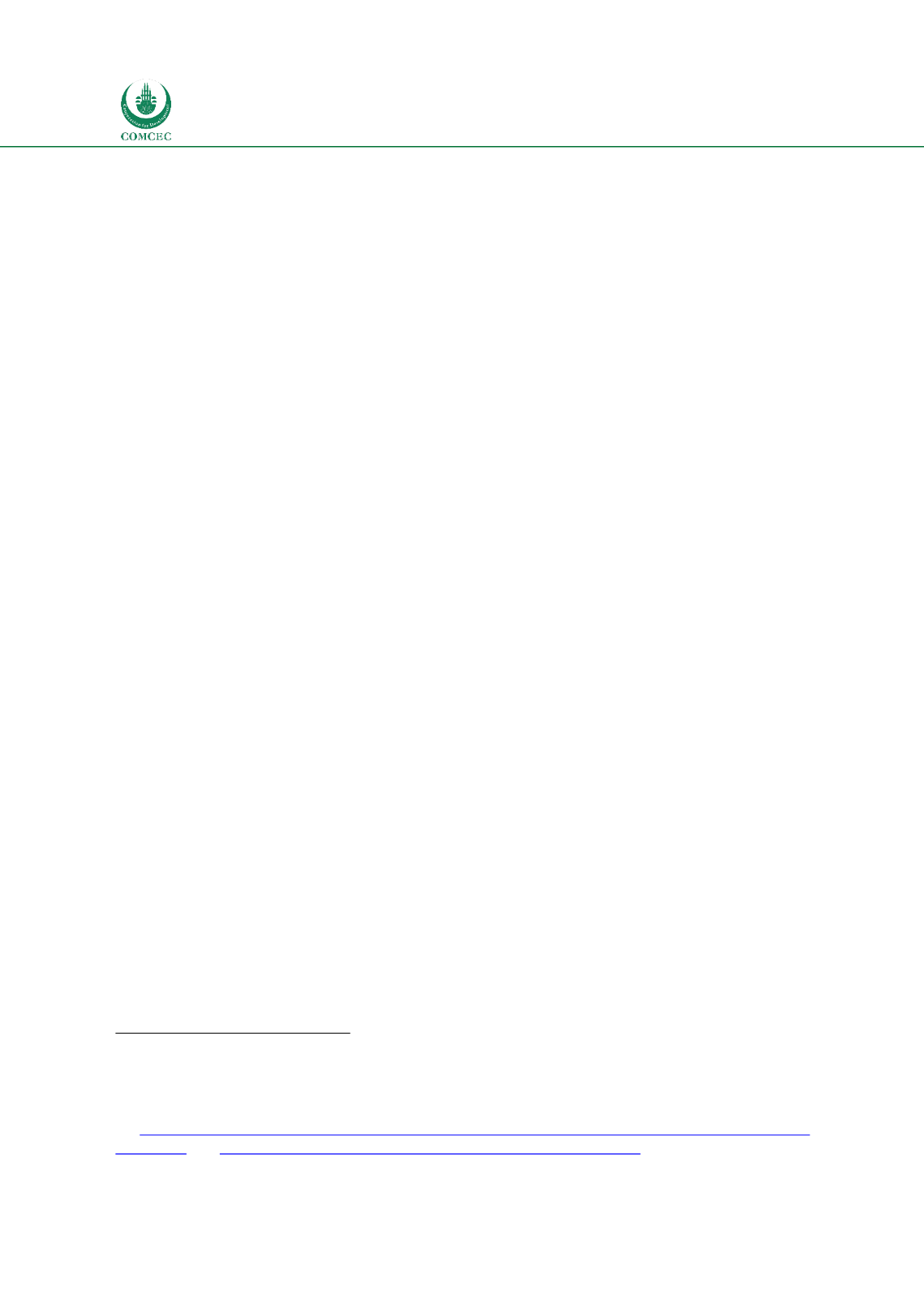

National and Global Islamic Financial Architecture:
Problems and Possible Solutions for the OIC Member Countries
56
4.
Islamic Financial Architecture: Case Studies of Selected OIC
Member Countries
4.1. Bangladesh
The financial sector of Bangladesh is diversified and consists of different types of commercial
banks (private, state-owned, foreign), co-operative banks, specialized development banks,
merchant (investment) banks, non-bank financial institutions (investment and finance
companies, leasing companies etc.), micro-credit organizations, depository participants (stock
dealers, brokers etc.), insurance companies, and credit rating companies.
Since its inception in 1983, the Islamic banking industry in Bangladesh has grown rapidly and
become a significant sector. At present, the Islamic banking industry is comprised of 8 full-
fledged Islamic banks, 19 Islamic banking branches of 8 conventional commercial banks, and
25 Islamic banking windows of 7 conventional commercial banks, all of which provide Islamic
banking services in Bangladesh. The total deposits of Islamic banks and Islamic banking
branches were BDT 1417.3 billion (USD 18.25) in December 2014, constituting 20.3% of total
banking deposits. The corresponding figure for credit was BDT 1195.4 (USD 15.4 billion),
accounting for 22.2% of the total (BB 2015a).
17
There are 77 insurance companies operating in
the country and, out of those, 3 general and 8 life insurance companies are operating in line
with Islamic Shariah. Out of 29 non-bank financial institutions, one NBFI is Islamic and has
operated in the country since 2001 (IFIL 2001).
Bangladesh also has a significant microfinance sector with about 700 microfinance institutions
(MFIs) registered with the Microfinance Regulatory Authority (MRA) in December 2015 and
another 300 MFIs being on the verge of getting licenses. With the total number of clients of the
sector being 33.73 million, the total loan outstanding in the microfinance sector was around
BDT 403 billion (USD 5.19 billion) with a savings of BDT 237 billion (USD 3.05 billion) as of
June 2014.
The country also has two stock exchanges, namely the Dhaka Stock Exchange (DSE) and
Chittagong Stock Exchange (CSE). In 2014, the Dhaka Stock Exchange launched the Shariah
Index DSES, and the Chittagong Stock Exchange Limited (CSE) launched the CSE Shariah Index
(CSI) representing listed companies that are Shari’ah compliant. A total of 77 Shariah
compliant companies were listed in these exchanges.
18
Some Islamic mutual funds and one
perpetual Islamic bond introduced by the Islami Bank Bangladesh Limited are also being
traded in the market. The Ministry of Finance is actively considering issuing sukuk in a foreign
currency to promote the infrastructural development of the country, but this has not
materialized yet.
In its Strategic Plan 2015-2019, Bangladesh Bank outlined its vision for the financial
institutions in the country. In this document, Islamic finance was mentioned twice. The first
was in relation to improving their Islamic banking regulatory framework by aligning it to IFSB
17
Average exchange rates from IMF International Financial Statistics for the year 2014 are used for
conversion to USD. The same source is used for converting domestic currencies to USD for all
countries in this chapter.
18
http://www.dhakatribune.com/stock-market/2014/jan/19/dse-launches-shariah-based-index- tomorrow an
d http://www.cse.com.bd/pdf/cse_shariah_index_list_new.pdf















